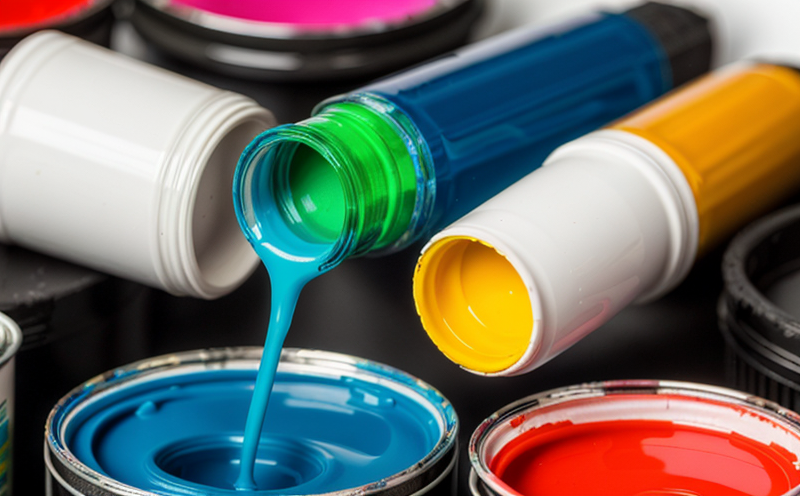USP 267 Surface Characterization of Pharmaceutical Coatings with Nanomaterials
The United States Pharmacopeia (USP) Monograph 267: Surface Characterization of Pharmaceutical Coatings is a critical standard that ensures the quality and safety of pharmaceutical coatings. This monograph provides detailed guidance on how to characterize the surface properties of pharmaceutical coatings, especially those containing nanomaterials. Compliance with USP 267 is essential for manufacturers looking to meet regulatory requirements and ensure product integrity.
The inclusion of nanomaterials in pharmaceutical coatings presents unique challenges due to their small size and complex structure. Nanomaterials can significantly affect the surface properties, such as roughness, thickness, and uniformity, which are critical factors in determining the performance and effectiveness of the coating. USP 267 provides a robust framework for ensuring that these nanomaterials do not compromise the quality or stability of the pharmaceutical product.
The standard outlines several key parameters that must be characterized to ensure compliance:
- Roughness
- Thickness
- Uniformity
- Composition
These parameters are essential for ensuring that the coating meets the intended performance characteristics. For instance, roughness can affect drug release rates and adhesion properties, while thickness variations can influence the coating's ability to protect the underlying material.
The testing process involves several steps, including sample preparation, measurement using specialized equipment, and interpretation of results. Sample preparation is critical as it directly impacts the accuracy of the measurements. The following sections will provide a detailed overview of these aspects:
Sample Preparation
Proper sample preparation is crucial for obtaining accurate and reliable data. This involves ensuring that the coating is in its original state before testing begins. It may require cleaning, drying, or conditioning the sample to remove any contaminants or moisture that could interfere with measurements.
The choice of measurement instruments is also critical. For nanoscale coatings, scanning electron microscopy (SEM) and atomic force microscopy (AFM) are commonly used for surface characterization. SEM provides detailed images at high magnification, while AFM can measure the topography and provide insights into roughness and texture.
Measurement Parameters
The USP 267 standard specifies several key parameters that need to be characterized:
- Roughness: Measured using AFM, SEM, or other appropriate techniques. This parameter is crucial as it can affect the adhesion of the coating and the release rate of the drug.
- Thickness: Determined by cross-sectional SEM or X-ray microprobe analysis (XMPA). Thickness variations can lead to inconsistencies in the performance of the coating, so they must be controlled within specified limits.
- Uniformity: Ensured through consistent application methods and monitoring during the manufacturing process. Non-uniform coatings may not provide the desired protection or release characteristics.
- Composition: Analyzed using techniques such as energy-dispersive X-ray spectroscopy (EDX) to ensure that the nanomaterials are present in the correct proportions and that there is no contamination by other materials.
The results of these measurements must be reported according to USP guidelines, providing a comprehensive picture of the coating's surface properties. This data is essential for ensuring compliance with regulatory requirements and for making informed decisions about product quality.
Industry Applications
| Application | Description |
|---|---|
| Nanoparticle Incorporation in Coatings | Ensuring that nanomaterials are uniformly distributed within the coating to enhance performance. |
| Drug Delivery Systems | Characterizing the surface properties of coatings used for controlled drug release. |
| Adhesion Enhancement | Evaluating how well the coating adheres to the substrate, which is critical in preventing delamination and ensuring long-term stability. |
The USP 267 standard plays a vital role in ensuring that pharmaceutical coatings meet high-quality standards. By characterizing surface properties such as roughness, thickness, uniformity, and composition, manufacturers can ensure that their products are safe, effective, and compliant with regulatory requirements.
Quality and Reliability Assurance
USP 267 is not just a compliance tool; it is also an essential part of quality assurance programs. By implementing this standard, manufacturers can:
- Ensure Consistency: The standard provides clear guidelines for measuring surface properties, ensuring that results are consistent and reproducible.
- Promote Quality Control: Regular characterization of the coating's surface properties helps identify potential issues early in the manufacturing process.
- Enhance Safety: By ensuring that nanomaterials do not compromise the quality or stability of the coating, USP 267 contributes to patient safety.
In conclusion, compliance with USP 267 is essential for manufacturers who wish to ensure the highest standards in pharmaceutical coatings. This standard provides a robust framework for characterizing surface properties and ensures that nanomaterials do not compromise product quality or effectiveness.





